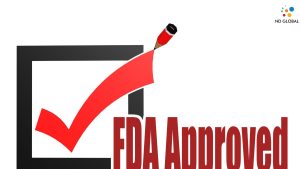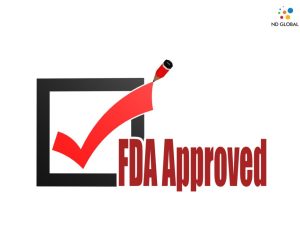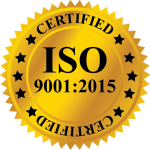Overview: With the initial goal of averting another European war, the European Union (EU) was established in 1993 following several treaties dating back to the 1950s. This geopolitical entity was made up of three EFTA nations in addition to the 27 member states of the European Union. Naturally, integrating 30 diverse countries into a single entity required years of protracted negotiations and several trade agreements to regulate cross-border trade within the newly created EU and with nations outside of it. Before these negotiations, each nation had its laws and rules governing the production, sale, and import of products into its supply chain, and medical devices were no exception. To unify the various medical device laws into a single set of rules that would be adopted by all member states and applied to any device sold within the European Economic Area (EEA), MDD was developed. The MDD requirements established the necessity for a complete quality management system, a design history file, and abundant technical documentation to demonstrate compliance with MDD standards. These requirements were based on the classification and intended use of the device. To demonstrate compliance with EU health, safety, and environmental protection standards, MDD also required a CE mark.
What Triggered the Move to MDR: The now-famous scandal that bears their name, which involved Poly Implant Prothése (PIP), a French producer of cosmetic breast implants, is generally regarded as the sentinel event that sparked this significant regulatory overhaul.
- 1991 – PIP produced a variety of breast implants used globally, including in the US.
- 1992 – FDA issued a warning to stop using silicone gel implants. PIP switches to hydrogel and eventually saline implants.
- 1997 – PIP was permitted to manufacture medical-grade silicone implants.
- 2000 – The FDA rejects PIP’s saline implants after discovering numerous GMP violations during a routine inspection of the PIP facility.
- 2001 – PIP decides against using medical-grade silicone in their implants in favour of “home-made” industrial-grade silicone.
- 2003 – The first indication of trouble is the rise in PIP-related regulatory and legal filings.
- 2009 – French surgeons first report high implant rupture rates, and a wave of legal complaints from France and the UK forces PIP into bankruptcy.
- 2010 – Discontinuation of all PIP products and the company’s liquidation.
- 2011 – French government advises 30,000 women with PIP implants to have them removed.
What is MDR: The European Commission began a thorough revision of its medical device regulations after the PIP scandal to enhance product safety and regain public trust in medical devices. As a result, the new, much stricter Medical Device Regulation was adopted in 2017. The Medical Device Regulation (MDR) was created in 2007 and had its first revision in 2017. It replaces MDD and applies to producers of medical devices that are imported or exported to Europe. It does not cover products used within the EU but may protect those marketed outside of it. What precisely needs to be done by medical device manufacturers to meet regulatory requirements is specified in the MDR. It stipulates a few different requirements for medical devices and calls for the CE marking of all goods.
The MDR covers any kind of medical device, including the software used by those devices (MDS). Other regulations, like the MDD, which applies to appliances used inside the EU, may only apply to specific groups or industries.
Manufacturers must abide by the MDR to sell their products legally and safely within the European Union. It’s also crucial for these businesses’ compliance officers or managers, who ensure that everything is done according to this law so that goods can be sold in Europe.
Key Changes in the EU-MDR:
Characteristics | Medical Devices Directive | Medical Device Regulation |
| Articles | 23 | 123 |
| Annexes | 12 | 17 |
| Rules | 18 | 22 |
| Pages | 60 | 175 |
EU MDR requirements:
- Certain devices without intended medical use must comply with new EU MDR requirements.
- Refurbished one-time-use medical equipment.
- Instruments for cleaning, sterilizing, and disinfecting
- Instruments utilizing non-viable human tissues.
- Ancillary pharmaceuticals
- Active medical devices that are implanted
Important Changed Areas:
Major
- Types of medical equipment
- System for uniquely identifying devices (UDI)
Moderate
- Clinical investigation, post-market surveillance, and clinical evaluation requirements
- Rules of classification
Small
- The person in charge of following regulations
- Participants in the medical device’s lifecycle
What benefits does the MDR offer producers of medical devices?
- Easier document creation and definition of necessary tests and evaluations for the manufacturers
- Additional specifications for technical documentation
- Formulated specifications for the quality management system
- More stringent guidelines are needed to demonstrate the medical devices’ patient and user safety.
All medical devices with a valid CE mark may be sold on the EU market during the transition and until the relevant certificate (for goods under the control of a Notified Body) expires. Notably, certain devices with CE markings issued under the Directives and those issued under the new Regulation will simultaneously (and legally) be in circulation for up to approximately seven years. A medical device is not exempt from the requirements to be safe and operate as intended just because it is CE-marked in accordance with one of the current Directives. Additionally, a rigorous vigilance process will continue to be applied to medical devices CE marked in accordance with the current Directives to guarantee that any issues are swiftly found and fixed. Medical devices that have been CE marked under the new Regulation before May 2024 are not necessarily inferior to those on the market under one of the current Directives.
Conclusion: The transition from the Medical Devices Directive (MDD) to the Medical Device Regulation (MDR) within the European Union marks a significant regulatory shift to enhance product safety, strengthen compliance, and rebuild public trust in medical devices. As the European Union navigates this regulatory transition, it demonstrates its dedication to maintaining the highest standards in medical device manufacturing, promoting innovation, and safeguarding the health and well-being of its citizens. The MDR reflects the EU’s commitment to technological advancement and serves as a testament to its responsiveness in addressing emerging challenges in the medical device industry.
How ND Global can help: ND Global with more than a decade of experience can provide valuable assistance to medical device companies in navigating the MDD to MDR transition. Here are some ways in which ND Global can help:
- Gap Assessment
- Technical File Preparation
- QMS Documentation
- Expert Review & Recommendations
- European Authorized Representative (EC REP)
- EUDAMED
- Mock Audits & Trainings
- PRRC Services
- Clinical Evaluation Plan & Report
- Software Validation










